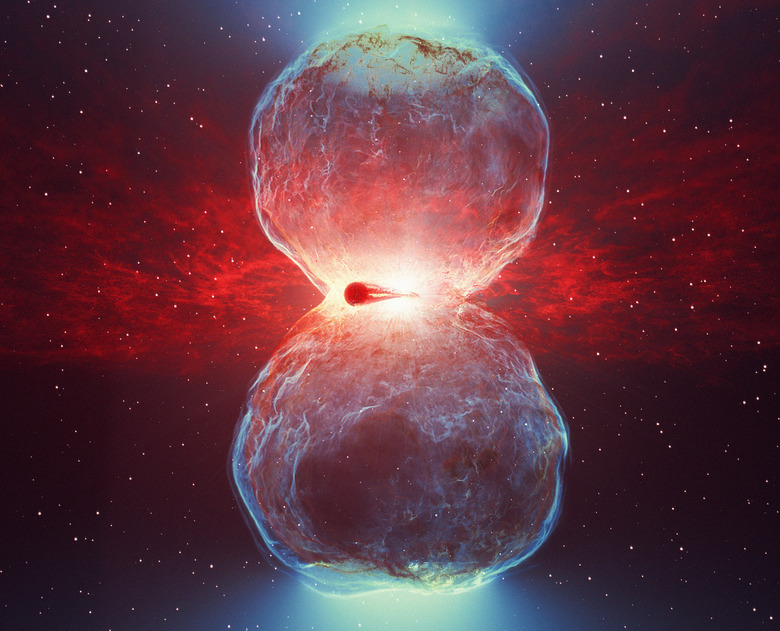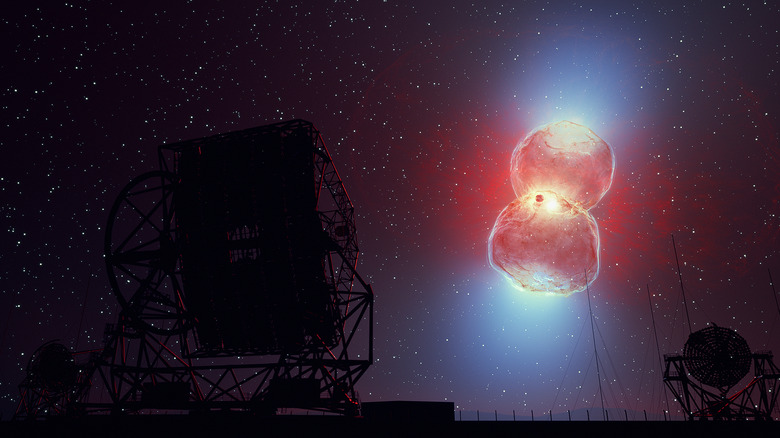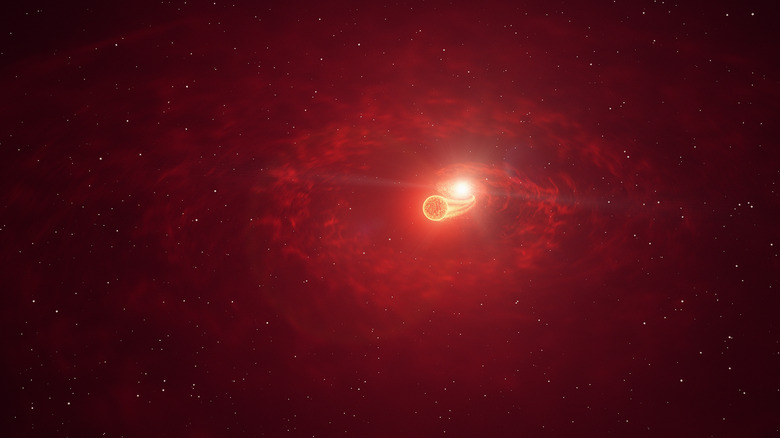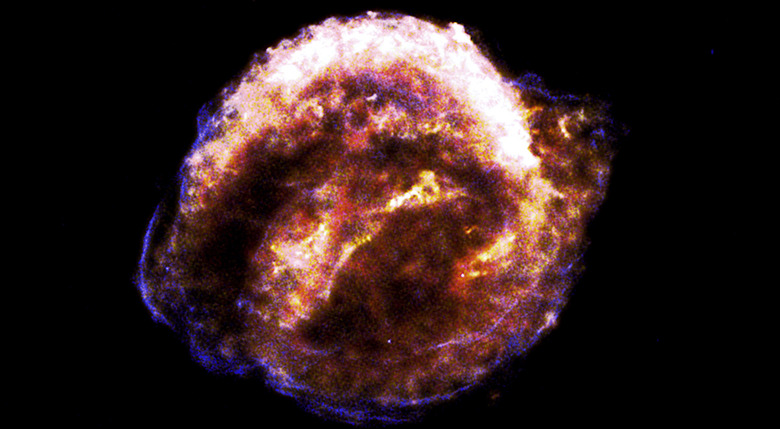Massive Eruption On A Dead Star Sent Shockwaves Through Space
A group of scientists recently observed a massive nova explosion they say pushed particles to their theoretical speed limit. The eruption came from a burned-out stellar core in the system RS Ophiuchi that experiences new eruptions every 15 to 20 years. The latest eruption took place near the end of 2021.
This latest nova explosion has "enormous implications for astrophysics"
The nova explosion hit in August of 2021. When it erupted, scientists watched the subsequent shock wave using a gamma-ray observatory called the High Energy Stereoscopic System (HESS). The scientists were able to observe the eruption using very-high-energy gamma rays for the first time.
With their observations, they found that the nova explosion from RS Ophiuchi reached speeds hundreds of times faster than any we've ever observed in other novas. In fact, the speeds were so great, they reached the limits that scientists have predicted in various theoretical models. The observation is so important because it proves that those speeds can be reached in genuine cosmic shock waves.
Ruslan Konno, a co-author of a study focused on the eruption, as well as a doctoral candidate at Deutsches Elektronen-Synchrotron in Germany, noted that the entire thing has "enormous implications for astrophysics" in a statement about the study. That's because it all suggests that supernova explosions could create even more efficient particle acceleration processes.
What makes RS Ophiuchi so special?
It is supernovas that create systems like RS Ophiuchi. The star system is made up of two stars; a normal star and a white dwarf. The white dwarf was created when an old star burned out, collapsing in on itself. They are usually small, compact stars, but we have seen some massive white dwarf stars in the past, too.
In systems like RS Ophiuchi, white dwarfs often siphon material from the larger, living star. Once that material reaches a critical level, it creates a nova explosion like the one these scientists studied.
While a lot of nova events happen and then burn out, RS Ophiuchi is a recurrent nova system. That means the nova explosions occur again and again after a set amount of time. The scientists say that these observations of RS Ophiuchi were only made possible thanks to short notice from astronomers, and their own quick reaction to move HESS to observe it.
Digging into the data
Now that we have the data, though, what do we do with it? HESS Director Stefan Wagner is a professor at the regional observatory. He says that researchers can now dig deeper into the observations made by the team using the telescopic system. With that data, we may be able to learn more about nova explosions.
Additionally, we may even be able to see if there is anything about them that makes them special. Because this is the first time scientists have observed these kinds of particle speeds in a nova, they want to see if anything makes it stand out from other novas out there. If there is something, we may be able to use it to gain a better understanding of the events linked to nova explosions.
If nothing else, though, Wagner says this new series of observations is another checkmark of success for gamma-ray astronomy.



